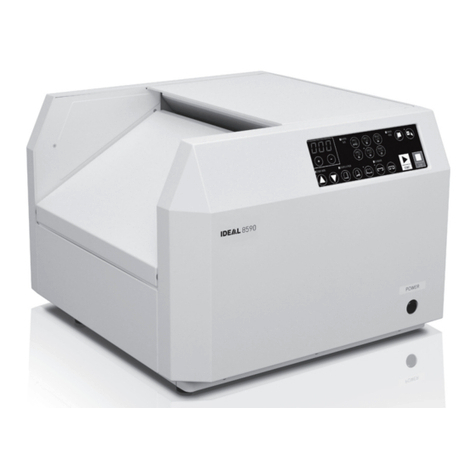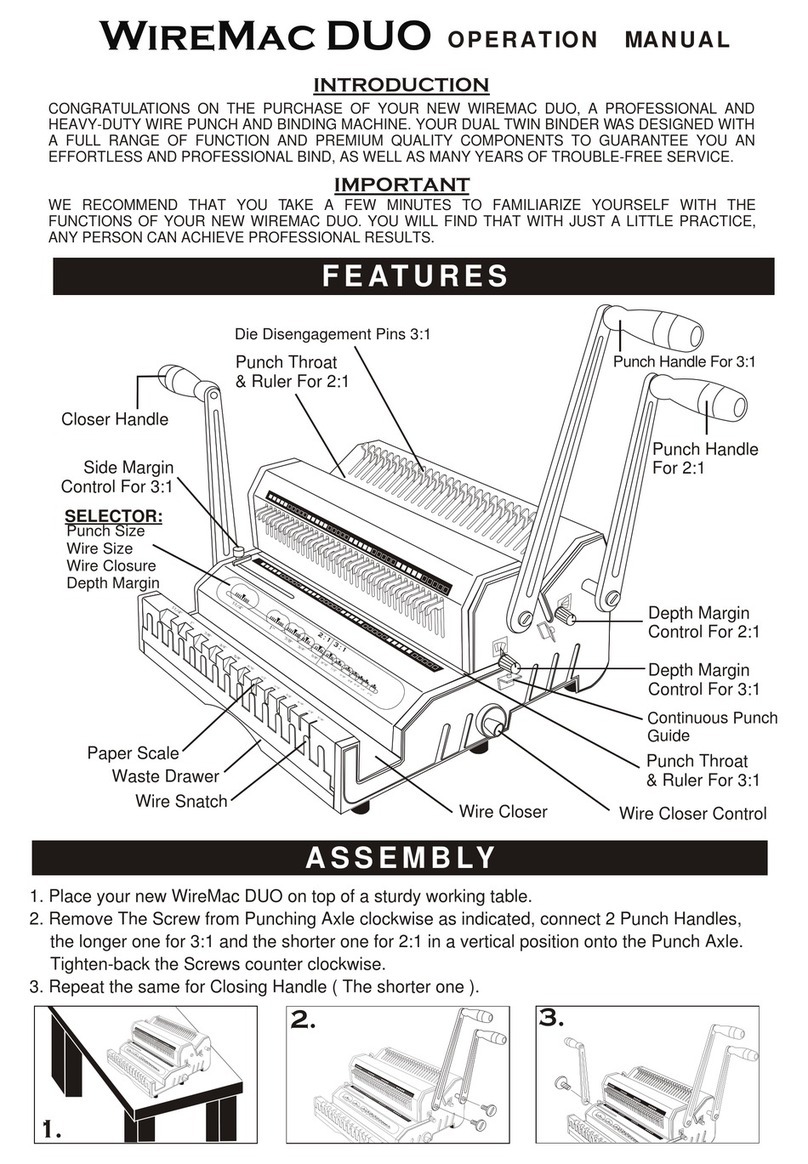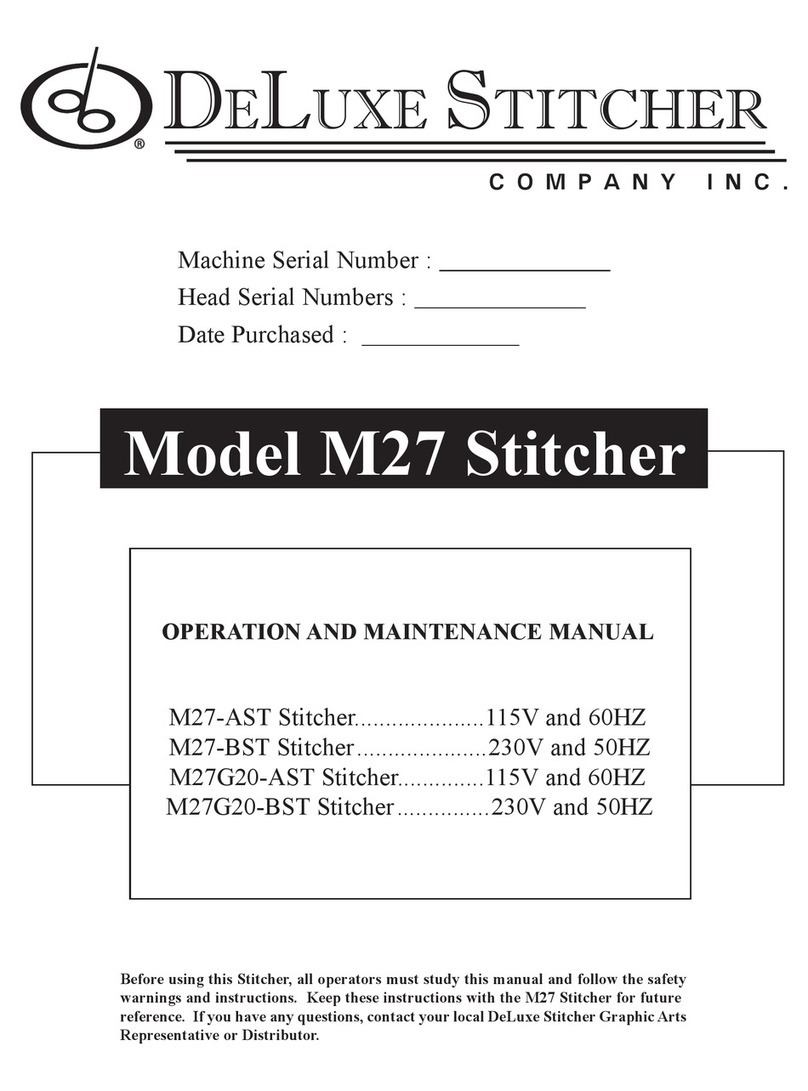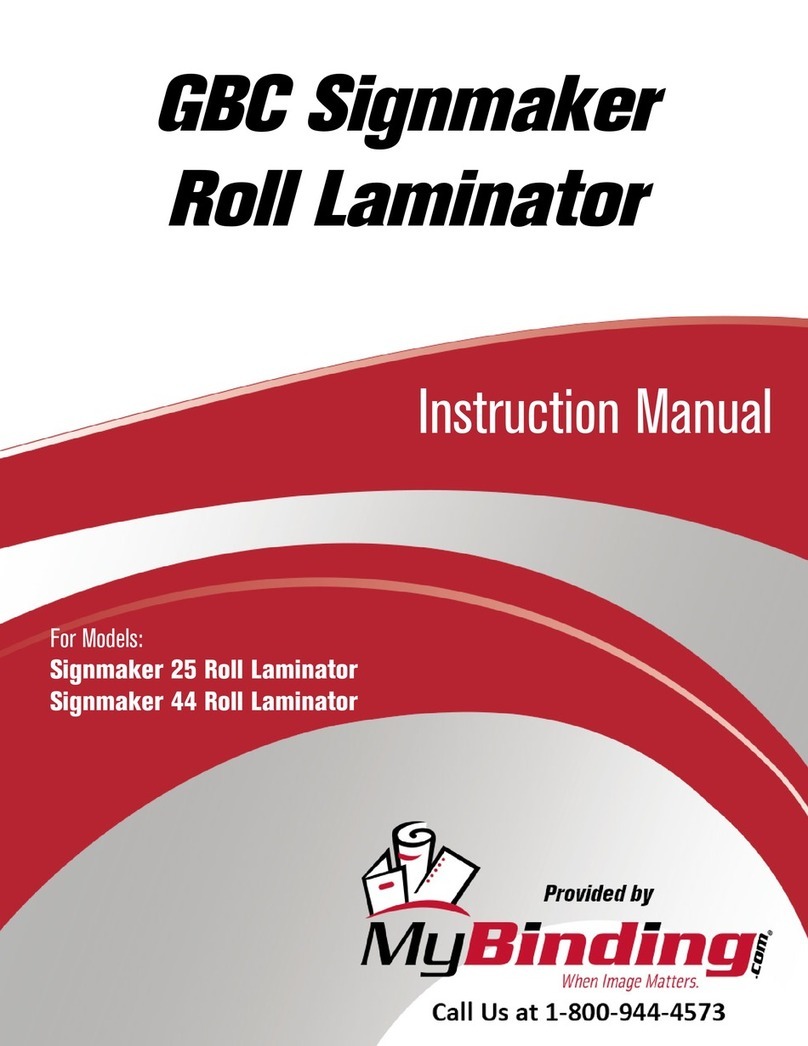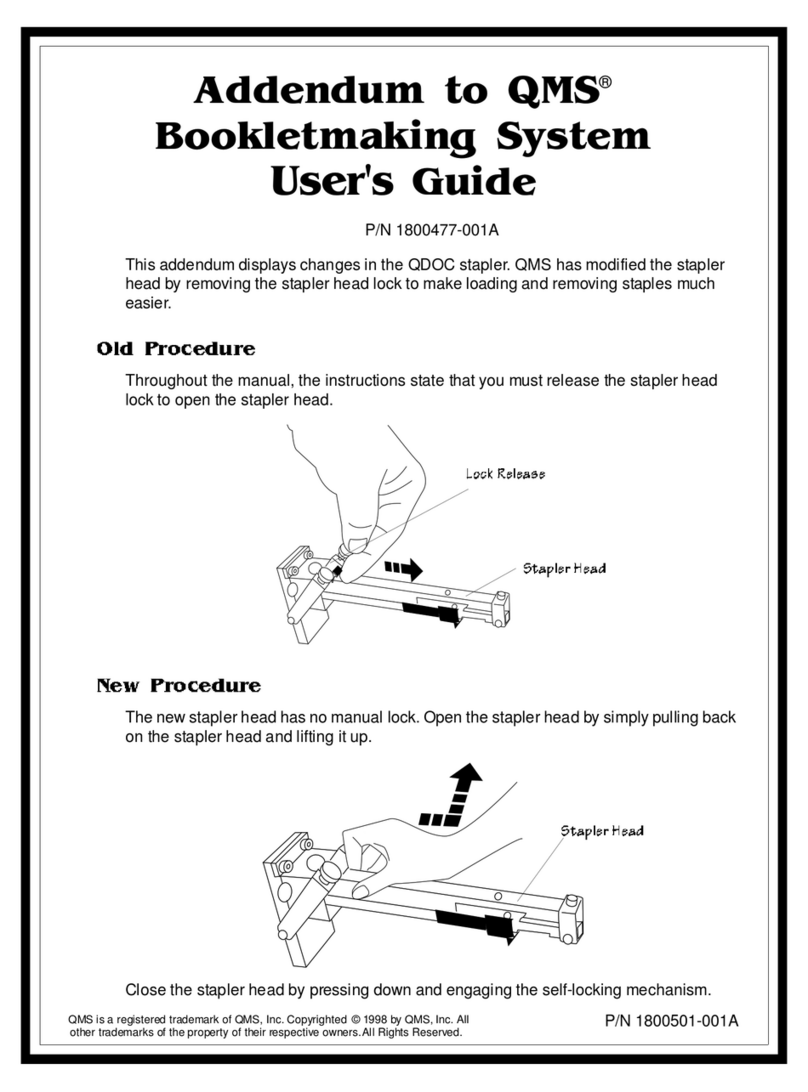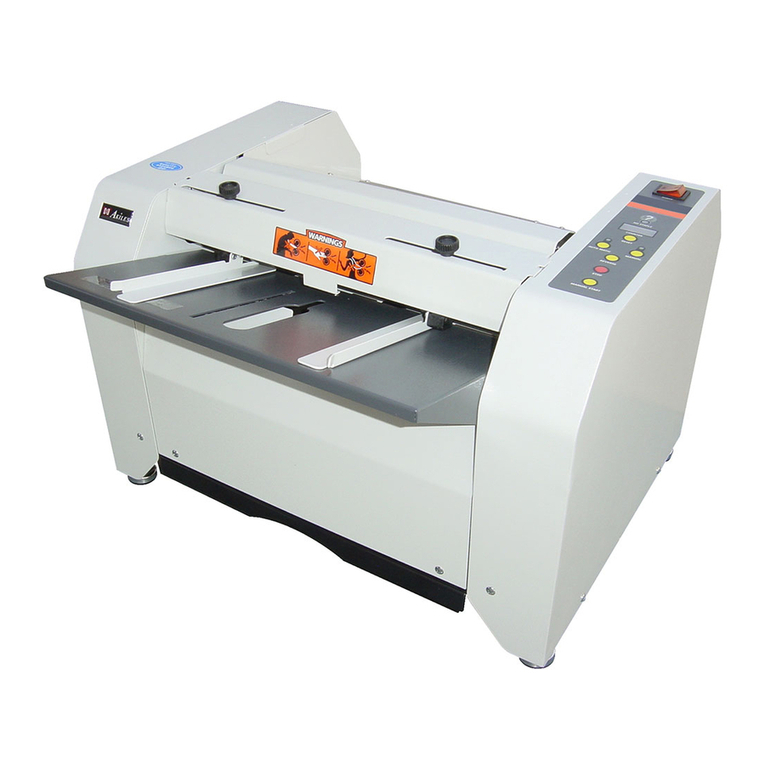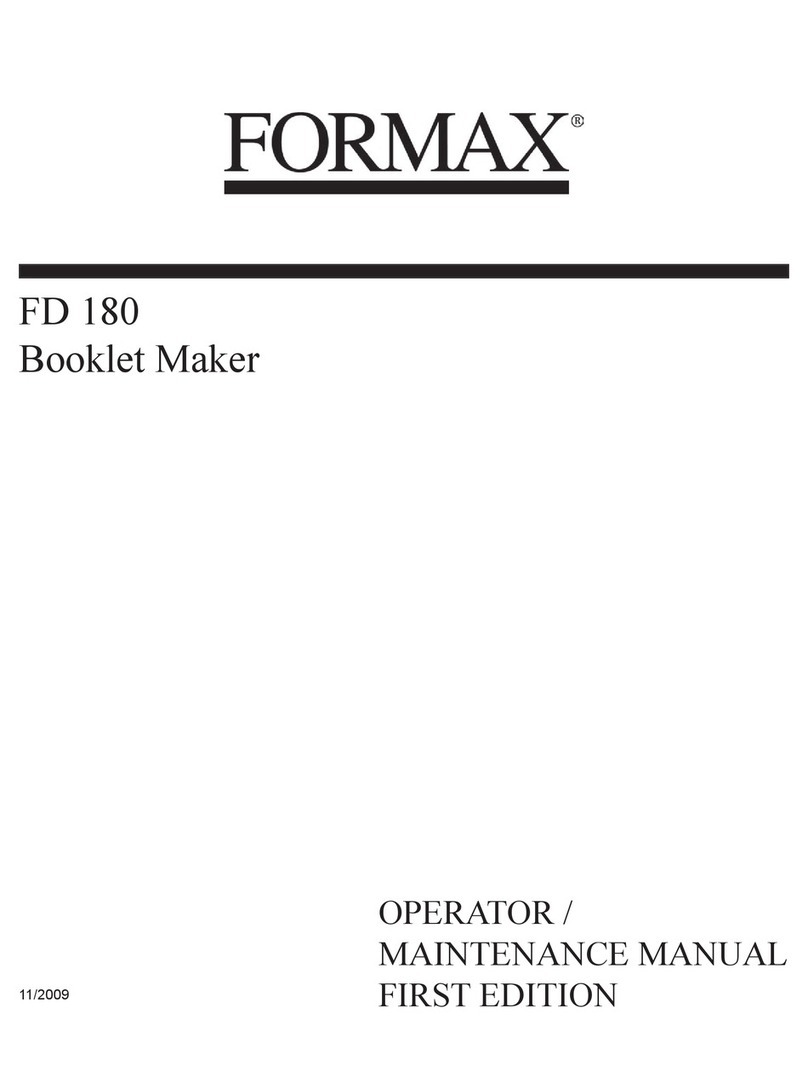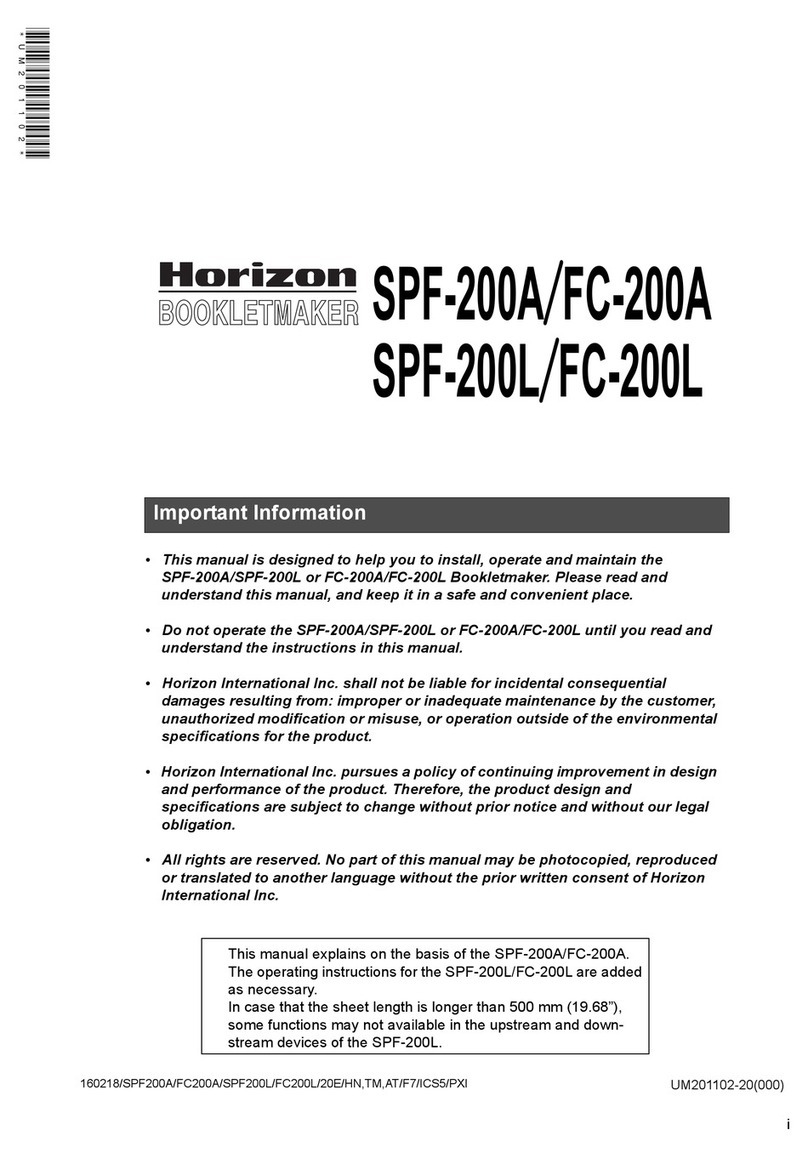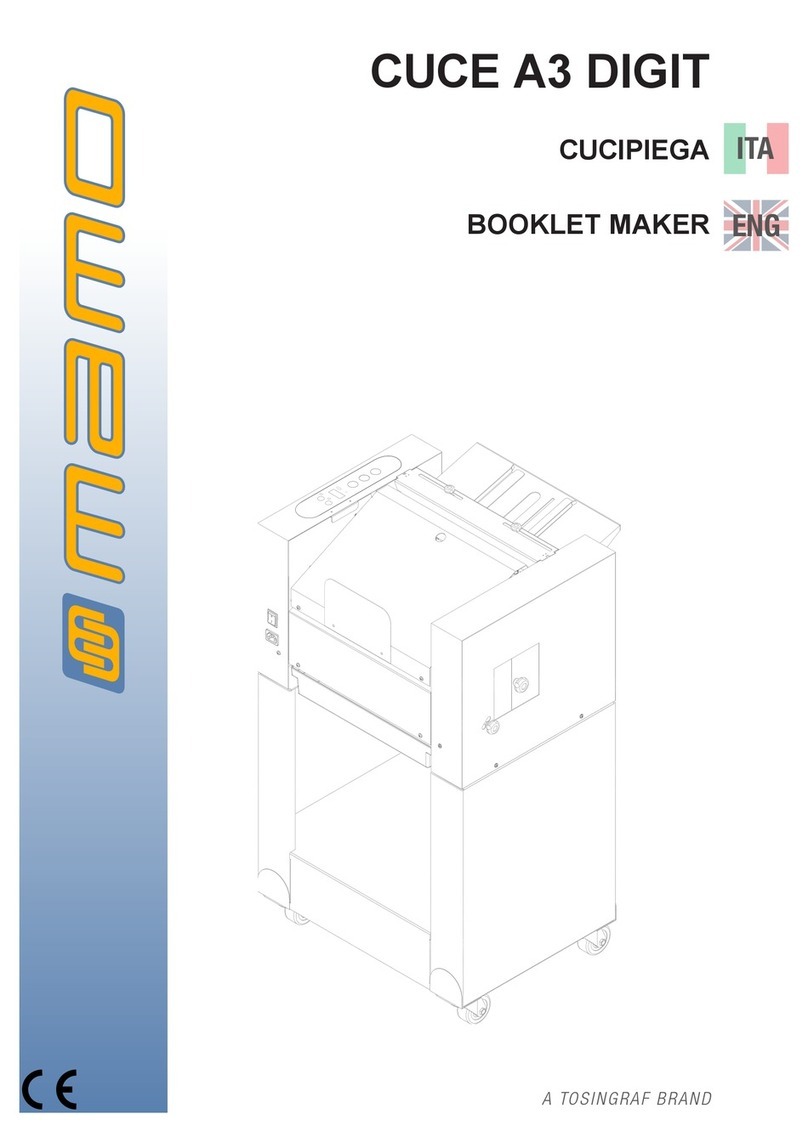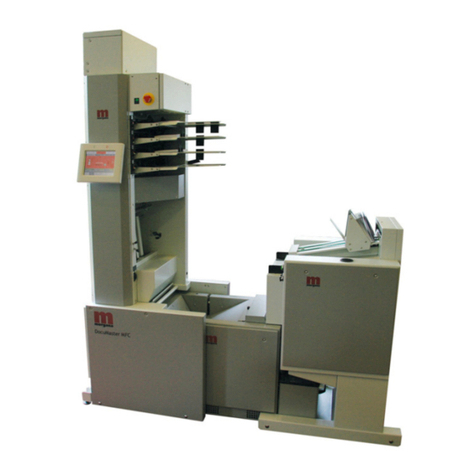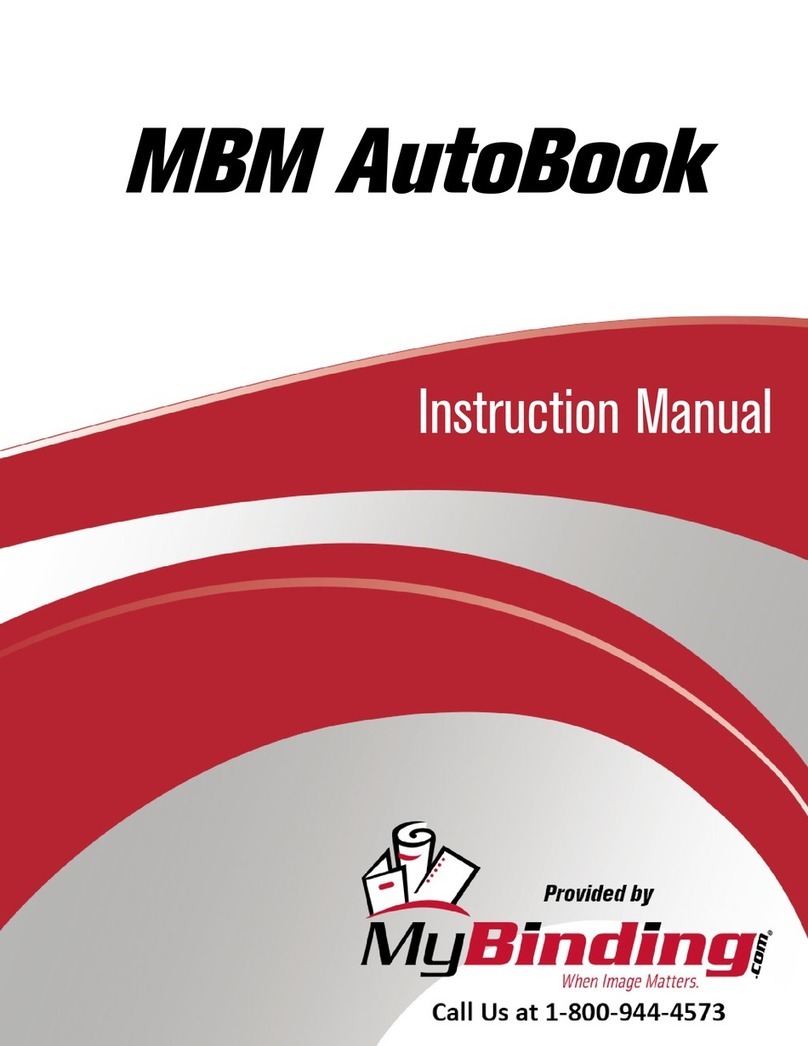
SIDE STITCHING
Side stitching can be done with 5.5" x 8.5" or 8.5"
x 11" (also: A4 or A5) paper. In either case, mount
the heads for 5.50" stitch spacing.
Lower the folding gate by pressing the toggle switch
located on the secondary table. The side stitched
sets will drop off the end of the secondary table
unfolded. The booklet stacker assembly can be re-
located to catch the finished sets.
Adjust the side guides for paper length. For in-
stance, if 8.5" x 11" paper is being side stitched, the
side guides mustbeset for the 11" length. Align the
outer edge of each side guide with the 11" mark on
the table scale.
With Optional Side/Corner Stitch Gate:
Use thumb screw to mount gate assembly on the
middle of the stitcher head mounting bar. Connect
cord from gate to socket on left inside wall. Place
two sheets between the side guides, and slide them
under the ski until they stop against the side stitch
gate. Use the hand crank to adjust the position of
the back jog until the paper just fits between the gate
and the raised jog fingers. If the standard fold gate
returns early and causes a jam or double stitch, turn
the gate timer clockwise enough to prevent the prob-
lem.
Without Optional Side/Corner Stitch Gate:
Adjust the stitching gate for paper width. For in-
stance, for 8.5" x 11" paper, the gate must be set for
the 8.5" width. First, lift open the front guard. Place
two sheets between the side guides, and slide them
under the ski until they stop against the gate. Turn
the knob until the trailing edge of the paper is just in
front of the clinchers.
OPERATION:
Turn on power and select "STITCH ON". Square
up a set of paper sheets by hand, and lay the front
edge on the table between the side guides. Push
until the front edge is under the ski, and then let go.
The set will be automatically stitched, folded, and
ejected onto the output conveyor.
FOLDING ONLY
Adjust the machine for paper size according to the
instructions for bookletmaking. However, the stitch-
ing heads may be left in any mounting positions. On
the control panel, select "STITCH OFF".
PAPER LENGTH:
Adjust the gates for paper length. For instance, for
8.5" x 11" paper, the gates must be set for the 11"
length. Place two sheets of paper between the side
guides and slide them under the ski until they stop
against the first gate. While holding the paper against
the gate, turn the hand crank under the left hand side
of the table until the paper is aligned with the 11"
mark on the scale. (Clockwise rotation moves the
paper out.) This single adjustment takes care of the
stitching gate, the folding gate, and the optional back
jog.
For machines equipped with the optional back jog,
fine tune the hand crank adjustment as follows. Place
your finger about one inch down from the top of one
of the jog fingers and raise it to the point that it hits
the stop. Use your other hand on the hand crank to
get the two sheets firmly against the back jog finger
without buckling the paper. In other words, two
sheets should fit perfectly between the first gate and
the raised jog fingers
Adjust the booklet tray at the end of the delivery
table to match the booklet size. Loosen the knob
under the tray, and slide the tray to the proper po-
sition. Finally, adjust the position of the delivery
table wheels. There are four sets of slots in the
frame for positioning the shaft and wheels; choose a
position that suits the booklet size. Just lift the shaft
and wheels and set the ends of the shaft into the
appropriate pairof slots.
9
